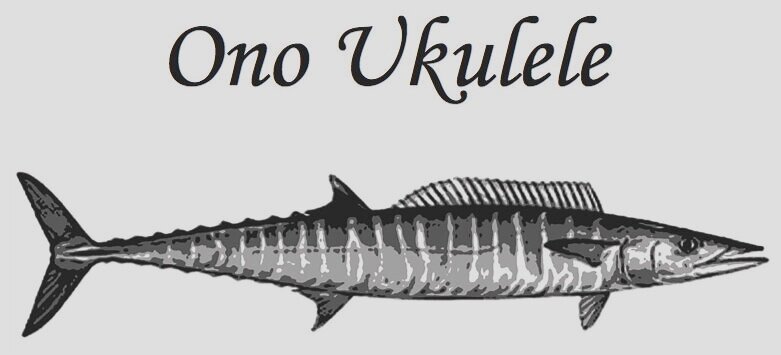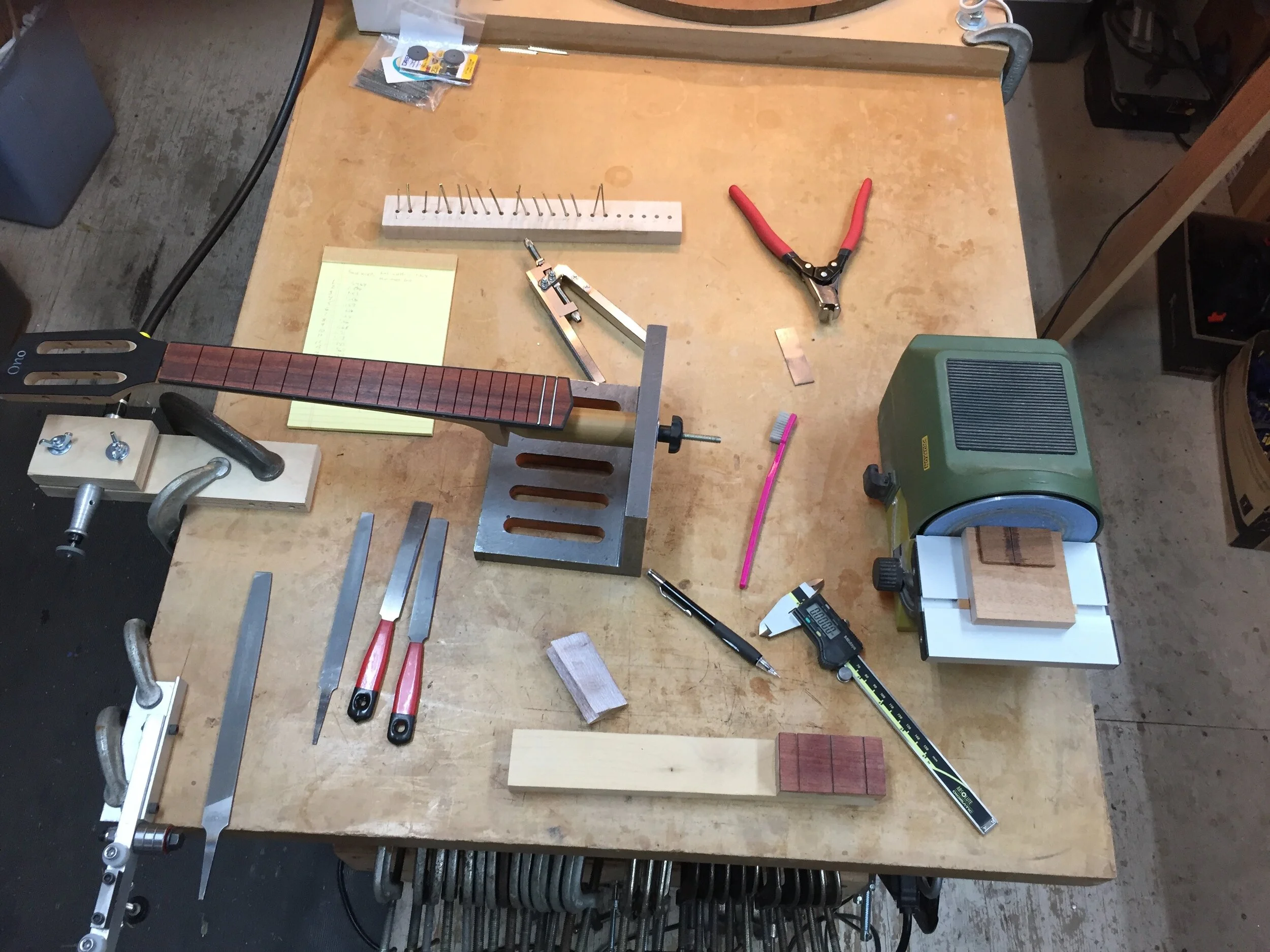This bloodwood fretboard is getting hemispherical fret ends, which many players find to be very comfortable. A more accurate description is “semi-hemispherical” but that is a little too unwieldy. Shaping and fitting them is a lot more time consuming than other fretting techniques but the result justifies the effort. The workbench photo shows the setup that I use, which involves quite a few tools and steps to get it right. Each fret is trimmed to the proper length since they are minutely set back from the edge of the board to accommodate a very slight round-over. This is done before the shaping steps and after the fret tang is removed with a special nipper and cleaned up with the filing jig in the lower left corner of the photo. Shaping of each rounded fret end is done with various tools and sandpaper. Final polishing is done with a 6" buffing wheel and rouge. It takes quite a while to do this 38 times but you get into a rhythm.
FRETBOARD RELIEF
One of the fine points in making a neck is that the fretboard should have a slight dip along its length. This is called "relief" and makes it possible to set the strings a bit lower with respect to the top of the frets. The result is an instrument that plays more easily and accurately. The dial indicator on this shop-built device shows relief of a little over three thousandths of an inch in a tenor ukulele neck. Once the instrument is completed, the string tension will pull a bit more curvature into the neck and it should be just about right.
A BETTER WAY TO GLUE BRIDGES
I recently improved my tooling for clamping bridges during the gluing process. This new caul has a mating surface with the same curve as the top and allows me to apply clamping pressure more evenly along the length of the bridge. A small point, perhaps, but instrument building is all about many little details that add up.
LAMINATED LININGS
Almost all ukuleles have a strip called a “lining” around the top and bottom of the sides. For a detailed explanation of linings, see my earlier post on “SOLID VS. KERFED LININGS.” I’ve recently started using laminated rather than bent linings. By laminating each lining out of two or three thicknesses of thin wood, I can match the curve of the lining exactly to the shape of the side more accurately than can be done with a bent lining. This reduces the stress caused by a mismatch and helps to preserve the desired shape of the side, insuring that the two sides are symmetrical. When two or more different woods are included in the lamination, the linings also look nicer when you peek inside the box!
RADIUSED FRETBOARDS
Some players swear by radiused fretboards and others prefer flat fretboards. Some don’t care either way. A number of players who have some sort of impairment to their fretting hands have told me that a radius is genuinely helpful in forming chords. After a long period of indecision, the pro-radius contingent convinced me that this would be a desirable option. There are a number of ways to radius a board and after trying one of the strenuous manual methods, I built a jig to do the job more quickly and with considerably less effort. The board blank is attached to the jig with double-sided tape. The router is on a carriage that slides both longitudinally and in an arc across the blank. By running the router back and forth along the length of the blank a dozen times or so and incrementing the arc a bit with each pass, the router cuts a smooth and perfectly radiused board. This is always done before slotting. If done after, the router bit can chip the board surface as it hits the slots. Choosing a radiused board sets off a chain reaction of related changes: the top of the nut and the saddle are curved to match, the frets must be bent in an arc matching the board and, while it’s not strictly necessary, I find it aesthetically pleasing to curve the top of the bridge. These details are a nice addition to the appearance of the instrument.









